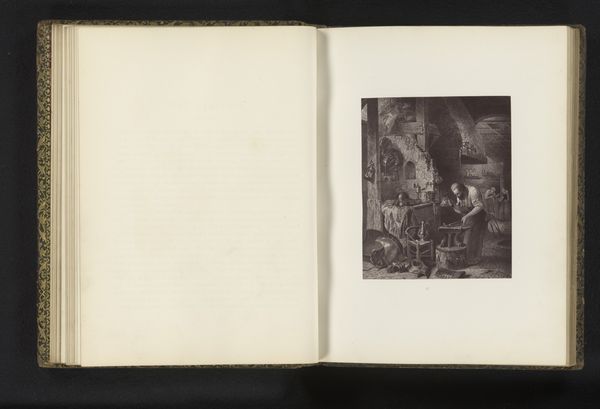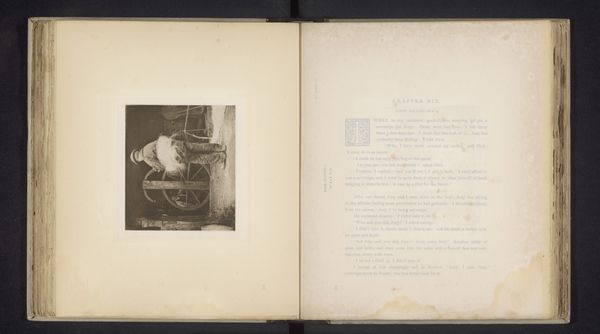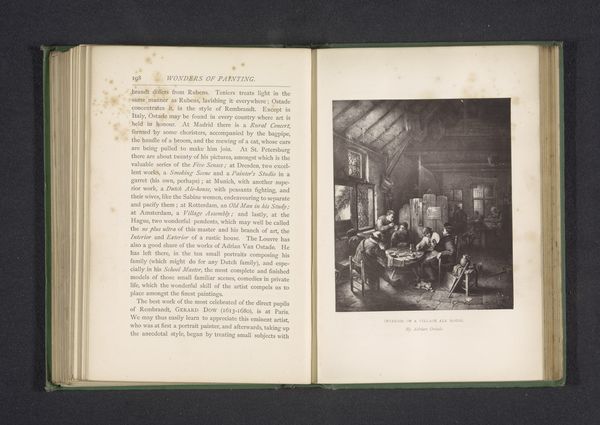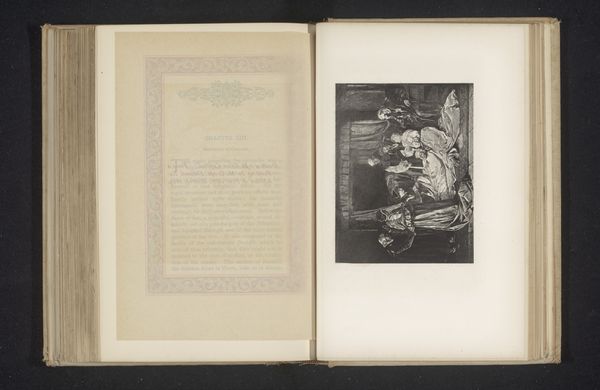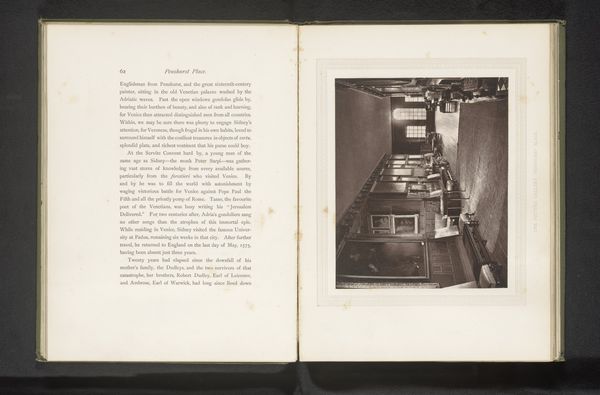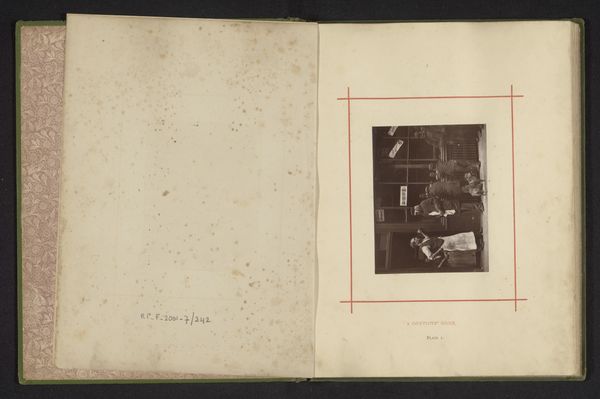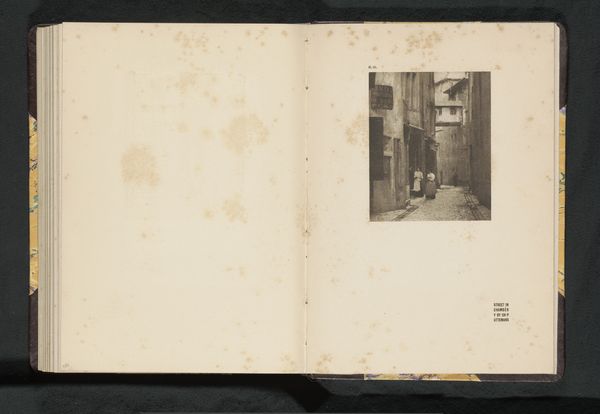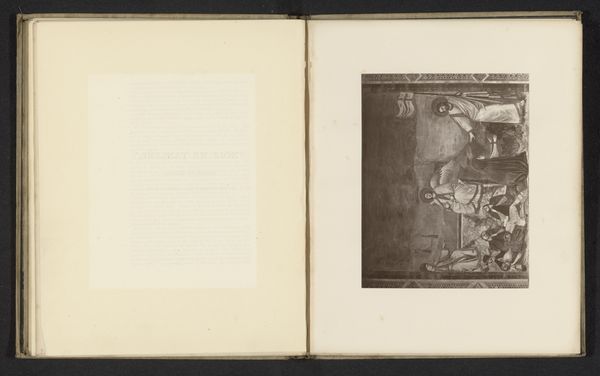
Fotoreproductie van een schilderij, voorstellende de vrouw van Tam in een interieur before 1868
0:00
0:00
#
aged paper
#
homemade paper
#
paper non-digital material
#
paperlike
#
sketch book
#
paper texture
#
folded paper
#
thick font
#
paper medium
#
historical font
Dimensions: height 172 mm, width 124 mm
Copyright: Rijks Museum: Open Domain
Curator: Let's delve into this fascinating photogravure entitled, "Fotoreproductie van een schilderij, voorstellende de vrouw van Tam in een interieur," or in English, "Photographic reproduction of a painting, depicting the wife of Tam in an interior." Created before 1868 by Alexander Gardner. What are your initial thoughts? Editor: Stark and melancholic. The stark light coming through that window throws a somber tone over the whole scene, don't you think? The textures, almost gritty, definitely add to that sense of hardscrabble living. Curator: Indeed. And that is a significant component to how we perceive these nineteenth-century images. Gardner wasn't simply documenting; he was subtly influencing public perception of that domestic setting. Note that across from this scene on the open page, a bit of poetry suggests this wife is somehow missing her 'silky suitors.' Editor: It's an interesting contrast isn't it? A photogravure, which attempts to simulate painting but flattens the experience into reproducibility. The symbol itself points at how, even in an early medium like this, mass culture shaped personal imagery. It transforms a potentially personal and singular subject into something that is viewed publicly. Curator: Exactly! The woman's position – head in hand, almost slouched—isn’t just a portrait of this 'Wife of Tam;' it embodies Victorian ideals and social anxieties of women's roles and responsibilities within a time of great domestic turbulence in wider culture. Editor: I wonder how intentional it all was, in this pre-photography era? Was it propaganda or a true social commentary? Curator: It's probably a blend of both. Symbols operate that way; they unconsciously project the norms of a given period. But consider: framing a domestic interior and subtly highlighting that the central figure is somehow romantically… isolated. That visual motif will likely linger far longer than an essay about gender dynamics. The symbolism here conveys messages that direct history perhaps obscures or over-intellectualizes. Editor: Good point. By placing this photograph into wider public discourse, aren't we, ourselves, playing a role in what its lasting significance will be? It is an older image in new light now. Curator: Perhaps we’re less defining its meaning and, instead, giving this old depiction of "Wife of Tam," space for new resonance. Its ambiguity keeps this domestic, dated scene very vital to our own present day.
Comments
No comments
Be the first to comment and join the conversation on the ultimate creative platform.

